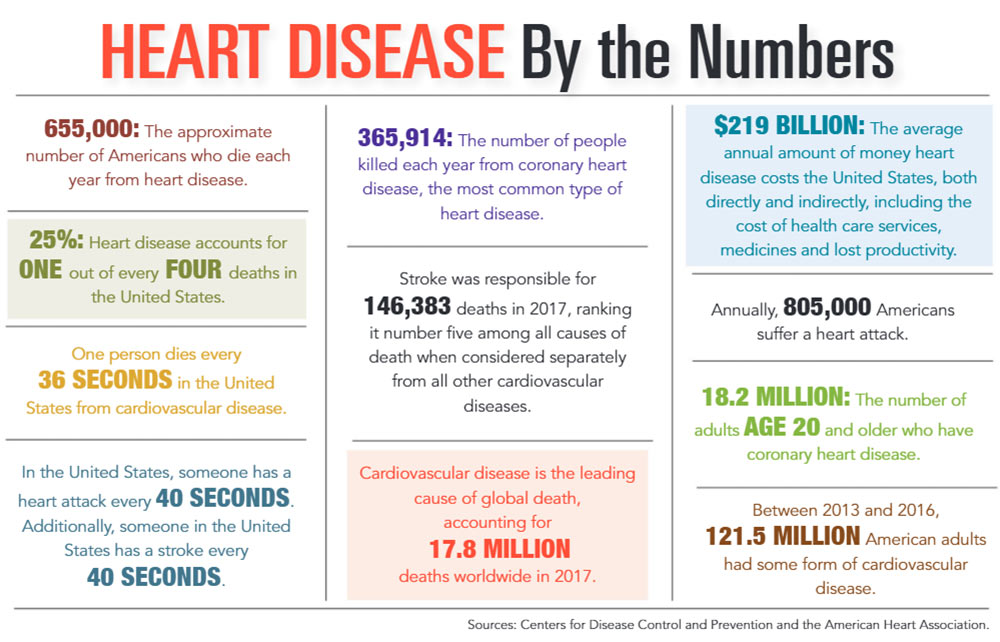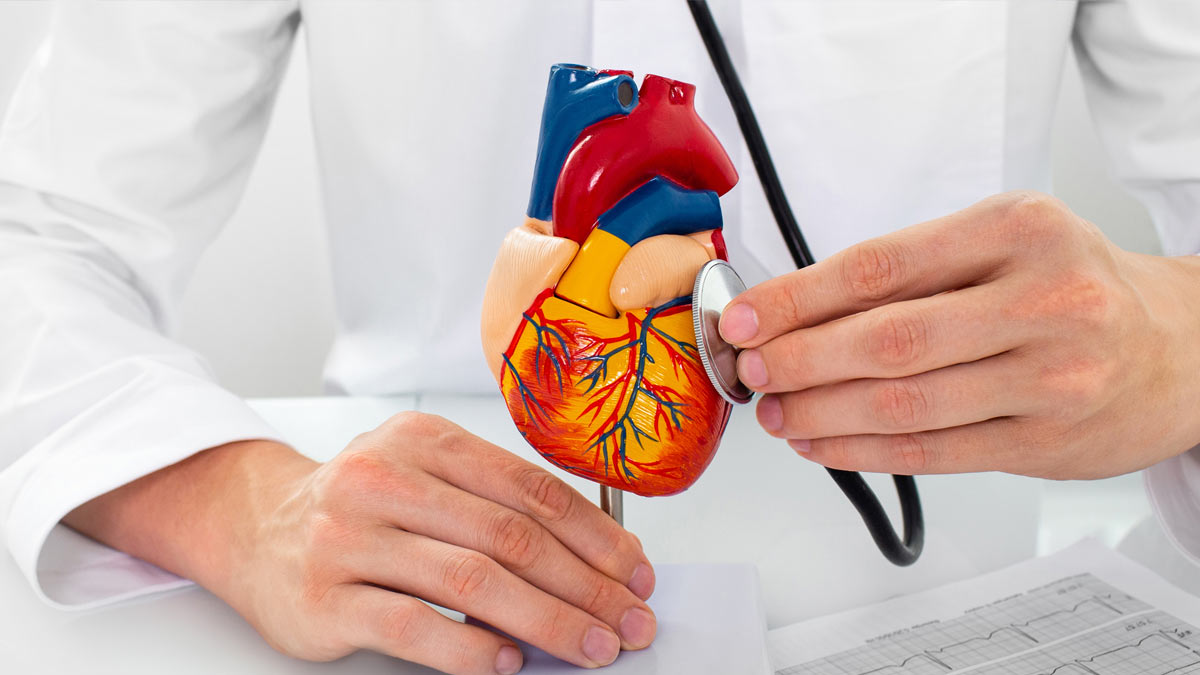Know the Risk Factors and Practice Heart Healthy Habits
The numbers for heart disease are staggering. It’s the leading cause of death both for women and men and among whites, African Americans and Asian/Pacific Islanders. That, of course, is the reason why heart health is extremely important, regardless of your gender or nationality.
Coronary artery disease – blockages in the heart – is the most common type of heart disease, but other conditions include valvular heart disease (aortic issues), cardiac arrhythmia (irregular heartbeat, atrial fibrillation) and cardiomyopathy (a weak heart).
“Heart disease comes in many different forms,” said Cardiac Electrophysiologist Jeffrey Senfield, M.D., of Bon Secours St. Francis Hospital in Greenville.
However, when most people discuss heart disease, they are referring to a blockage in the arteries – either the left or right coronary artery, he noted.
Trident Medical Center Interventional Cardiologist Patrick Looser, M.D., explained that coronary artery disease is caused by the buildup of cholesterol deposits, called plaque, in the arteries that supply the heart, causing the blood vessels in the heart to become damaged or diseased.
Common heart disease symptoms include chest pain or tightness, especially while exercising or walking up stairs, that is relieved when the body rests; shortness of breath; chronic fatigue; and sometimes heart palpitations as well. Additional signs can include nausea, vomiting and sweating. Both Drs. Senfield and Looser said another symptom sometimes seen in women is abdominal pain.
The six key risk factors Dr. Looser looks for are blood sugar, blood pressure, cholesterol, diet, exercise and smoking.
Dr. Senfield called smoking a “big risk factor” for all of the various forms of heart disease.
People with diabetes are at increased risk of heart disease, making it critically important to control their blood sugar levels. Treatment of high blood pressure is significant. Dr. Senfield said it is important to keep your systolic blood pressure number below 130 and your diastolic number under 80.
Another major diet-linked risk factor is obesity, which can lead to diabetes and elevated blood pressure. Whether a product of our lifestyles, eating habits or a combination thereof, “obesity is a major problem in our country,” stated Dr. Senfield.
Hereditary issues also are a risk factor for coronary artery disease, according to Drs. Looser and Senfield. Occasionally they will see a healthy person who is experiencing heart issues because of genetics, since a history of CAD in your immediate family puts you at higher risk. This isn’t cause for panic though.
“It’s not a death sentence if your mother or father had a heart attack at age 50,” assured Dr. Senfield. “You can reduce your risk. That’s why it’s important to see a physician.”
Practicing good habits and controlling the risk factors can help lower your heart disease risk, including eating a healthy diet and avoiding processed foods. Drs. Senfield and Looser recommend a Mediterranean diet that is fish- and vegetable-based and includes fruit, nuts and legumes and limits sugar and fat-laden foods. Maintaining an exercise routine and regular sleep cycles is beneficial, as is managing stress through activities such as meditation. Dr. Looser advised that regular exercise can help improve blood pressure and cholesterol levels, reducing those risk factors.
“Exercise is very important for heart health,” he asserted.
Diagnosis and treatments
Once an individual has been diagnosed with heart disease, it is important to take the medicines their doctor prescribes for them. Often, patients are given statin drugs to decrease blood pressure and lower cholesterol. Others include ezetimibe, a nonstatin medication that prevents the body from absorbing cholesterol, which doesn’t cause the side effects associated with statins, Dr. Looser said. There also are angiotensin-converting enzyme inhibitors that can lower blood pressure and reduce the risk of developing heart failure.
If a patient is exhibiting heart disease symptoms that aren’t severe but nevertheless warrant further evaluation, cardiologists can conduct a test to determine whether there is artery blockage, said Dr. Senfield. More severe symptoms might require a left heart catheterization or a coronary angiogram. Most patients receive an echocardiogram, what Dr. Senfield described as “an ultrasound of your heart,” which provides a clear picture of the overall function of the heart.
There are two main procedures in the event of coronary artery disease: A stent can be used to open blockage and restore blood flow, or a patient can be referred for bypass surgery if the blockage is serious.
Approximately half of patients who die from coronary artery disease experience sudden cardiac death, a sudden, unexpected event often attributed to a change in heart rhythm. That is why Dr. Looser said it’s important to have a coronary artery calcium score, which counts the amount of calcium in the heart and can indicate plaque buildup.
As a cardiac electrophysiologist, Dr. Senfield considers himself to be “a cardiac electrician,” someone who examines how the electrical system of the heart is performing. He pointed out that atrial fibrillation, which commonly flies under the heart disease radar but “it’s important to know about it,” because atrial fibrillation can dramatically increase the risk of stroke. A common procedure to treat this condition is ablation, which restores normal heart rhythm.
COVID-19 has triggered heart problems in some patients. While the coronavirus tends to primarily affect the lungs, it can impact the heart as well, said Dr. Looser. Studies have shown that roughly one-third of COVID-19 patients will suffer a myocardial injury or some form of minor heart damage. The issue with COVID-19 is that the heart is not getting enough oxygen, which can lead to blood clots in smaller vessels or inflammation.
Dr. Senfield clarified that it is important to keep perspective on the fact that despite the havoc that COVID-19 is wreaking nationwide, it will still not surpass heart disease’s staggering average annual death totals.
“Heart disease is still the number one cause of death in this country,” he said.
Additional Sources: WebMD.com








